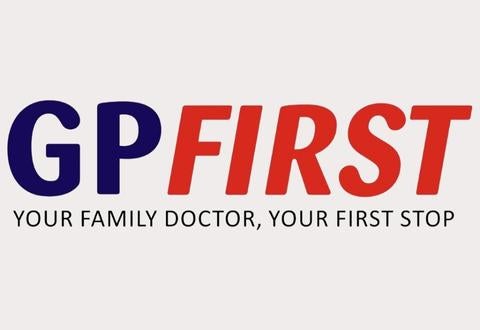
Technology Overview
The Self-Empowering and Enabling Kiosk (SEEK) is an automated health monitoring system to complement patient care. As a one-stop kiosk, it allows patients with well-controlled chronic diseases to measure physiological elements such as blood pressure, height and weight and features a customised questionnaire. This reduces the frequency that patients consult their doctors and thus, reduces waiting time.
Potential Applications
- Management of chronic diseases
- General health screening
Market Trends and Opportunities
SEEK is a time and cost saving solution for patients as it reduces waiting time at clinics and face-to-face consultation with doctors. Redistribution of manpower within primary care sector will allow intervention to more urgent medical needs.
Benefits
SEEK is a convenient platform situated at community areas where patients can monitor their health. SEEK empowers and enables individuals to take charge of their health by regular self-monitoring. SEEK will also complement office-based physician consultations.

Technology Overview
The pleural drainage device automates the process of draining bodily fluid from cavities. Through the pre-selection of volume and rate, it minimises human intervention and results in higher quality of patient care and safety.
Potential Applications
- Control rate and volume of generic fluid drainage for body cavities.
- Reversal of system for medication infusion of rate-controlled fluids.
Market Trends and Opportunities
There are many diseases that would result in the accumulation of fluids in body cavities. To improve the process of bodily fluid drainage, a system with controlled and precise measurements enhances the safety and efficiency of the drainage procedure.
Benefits
With minimal human intervention, the drainage system can reduce the probability of human errors and in turn, enhance patient safety.

Technology Overview
The Blood Warning Technology with Continuous Haemoglobin (BWATCH) sensor is a biomedical sensing, monitoring and alerting device that detects active re-bleeding at the site of venous catheter extraction. The use of BWATCH augments the process of regular inspection and allows medical staff to attend to more urgent medical needs.
Potential Applications
- Applicable to medical needs where differentiation between blood and other bodily fluids is necessary.
- Monitoring of wounds in patients who have undergone surgery.
Market Trends and Opportunities
The type of sensors used in BWATCH technology is more cost effective and has higher accuracy.
Benefits
The real-time monitoring system can provide timely intervention from medical personnel, thus reducing the probability of negative consequences.


Technology Overview
Percutaneous Nephrolithotomy (PCNL) is a minimally invasive surgical procedure performed under ultrasound and fluoroscopy guidance for the removal of large renal stones. Successful execution of PCNL is challenging due to respiratory movement of the patient’s kidney and involuntary motion of the surgeon.
Potential Applications
- The targeted application for this system is in PCNL for renal stone operations.
- The system can be extended to a wider range of surgical procedures including heart and lung related procedures, where surgeons also extract tissues through needle punctures.
Market Trends and Opportunities
The robot has a vision tracking capability to track the movement of the kidney and guide the needle, keeping the ultrasound probe in contact with the patient's skin throughout the procedure.
Benefits
The guided ultrasound probe and motion compensation robot reduces reliance on manual control, experience, dexterity. It also reduces the risk of multiple needle punctures that may increase the risk of bleeding and damage to patient's nearby organs.

Technology Overview
The guidewire safety system is a clamp and catch device that has a detection-locking mechanism to prevent continuation of surgical procedures until the guidewire is removed, and a catch which acts as visual reminder to anchor the distal end of the guidewire. Patent pending.
Potential Applications
Can be integrated seamlessly into existing processes of Seldinger Technique used in Central Venous Catheter (CVCs) procedures.
Market Trends and Opportunities
An estimated 20 million CVCs procedures are performed worldwide yearly. An estimated 30% of these that amounts to 6 million units will use Guidewire Safety System yearly.
Benefits
- Low-cost fail-safe tool to prevent guidewire retention.
- A catch to prevent the guidewire from slipping into the body while the catheter is being inserted.
- A clamp to restrict surgeon from further procedures, unless the guidewire is removed.

Technology Overview
Current shoulder dislocation reduction requires a skilled doctor and two nurses to perform. Applying high manual force to pull the patient’s arm for five to ten minutes can be tiring. This technology only requires one healthcare worker to operate, and has high procedural consistency. Patent pending.
Potential Applications
In the hospital Accident & Emergency (A&E) department, or in the army or sports training facilities, onsite or offsite. The technology can also be applied in the rural areas where there is shortage of skilled healthcare workers.
Market Trends and Opportunities
Estimated 30% of hospital worldwide will purchase two units, which amounts to 30000 units.
Benefits
- A pivoted holder to abduct arm in appropriate angle.
- A traction holder to pull arm in place.
- A digital monitor of the pulling force, to ensure & maintain traction force within safe limits.
- No sedation needed.
- Simple, light, portable.
Technology Overview
Reported errors in administration or wrong dosage of intravenous (IV) insulin can lead to adverse consequences including severe hypoglycaemia and even death. The insulin guard is a safety cap fitted onto Actrapid insulin vials to aid users with the use of the insulin syringe only while withdrawing insulin from Actrapid vials.
Potential Applications
- For use when insulin (Actrapid) needs to be administered (e.g., hospital, nursing homes, clinics, homecare).
Market Trends and Opportunities
With the increased utilisation of Actrapid insulin vials in various healthcare settings, the disposable Insulin Guard could be widely adopted to aid insulin administration.
Benefits
Enhances patient safety as the insulin guard only allows for the use of the insulin syringe for insulin withdrawal. It also supports the insulin administration procedure.

Technology Overview
The invention is a disposable contraption that can be easily attached to the plunger of the syringe after loading the drug. It aids users in drug delivery through a hard-stop mechanism, with each numbered brake corresponding to a volume of 1mL. The brakes can be snapped off in the increment of 1mL volume adjustments, allowing for dose titration. Breaking off two brakes would allow the plunger to deliver 2mL volume of the drug.
Potential Applications
- Applicable to users who administer any multi-dose parenteral drugs contained in a syringe where administration of the full content is possible, resulting in medication error.
- The syringe brake aids the use of syringe by ensuring a more controlled delivery.
Market Trends and Opportunities
As the device aids medication delivery through syringes, it could be applied in community hospitals, nursing homes, and other tertiary healthcare settings.
Benefits
The design of the syringe brake appeals to the user as it does not affect the current manoeuvrability or handling of the syringe during drug administration. By providing an easy slot-on design to the syringe, it aids users during medication delivery, thereby enhancing patient safety.
Technology Overview
The tracheostomy mask connector facilitates nebulisation by keeping the nebulisation chamber in an optimum position with its unique angle for patients who are unable to sit upright unassisted.
Potential Applications
- Applicable to all tracheostomy patients who are self-ventilating in various settings such as hospitals, nursing homes and homecare.
Market Trends and Opportunities
There is currently no suitable product available in the market that could optimise nebulisation for tracheostomy patients who are bed-ridden and unable to sit upright unassisted.
Benefits
The tracheostomy mask connector optimises medication delivery when nebulisation is performed on tracheostomy patients who are unable to sit upright unassisted. The product enhances the efficacy of medication delivery to patients, loosening thick mucus and phlegm in their airway.

Technology Overview
The Lung Simulation Model is capable of simulating diaphragmatic contractions and different pleural pressures to aid in the education and training of medical personnel. By providing a realistic representation of the human lung, this model omits the reliance on static models, mannequins, and animal lungs for training.
Potential Applications
- It could be used as a teaching tool for medical personnel to simulate different permutations of lung conditions.
- It could also be used in place of animal models for testing of medical devices.
Market Trends and Opportunities
The model will be a teaching tool for training medical personnel. It will benefit medical personnel as they can be exposed to various dynamic lung conditions.
Benefits
Medical personnel will benefit from the training using the simulation model, which in turn translates into better care for patients and improves patient safety.

Technology Overview
The quick release foot strap is a passive mechanism that harnesses deceleration forces for the safe, controlled, and coordinated release of a sailor’s foot. This reduces the incidence and seriousness of injuries in sailing events during capsizes and collisions. Sailors are usually flung violently with their foot strapped, putting enormous strain on their knees, ankles, and feet.
Potential Applications
- The quick release foot strap could be introduced to competitive high-performance boats to reduce injury rates among competitive sailors.
Market Trends and Opportunities
Increase in injury rates due to technological advances in sailing has called for improvement in existing foot strap designs to lower the incidence of injuries as faster boats gain popularity.
Benefits
The quick release foot strap releases the foot when a certain level of torque is applied. This passive mechanism helps keep the incidence and seriousness of sailing injuries low.

Technology Overview
Dysphagia has been associated with poor nutritional status. Among the elderly, poor nutritional status is consistently linked to increased risk of adverse clinical outcomes, both in terms of morbidity and mortality. The modification of food texture reduces the risk of choking and provides a nutritionally balanced diet that is culturally appropriate.
Potential Applications
- People suffering from dysphagia
- Healthcare institutions and homes to address nutritional needs and ensure safe swallowing
Market Trends and Opportunities
Singapore is experiencing an ageing population with longer life expectancy. It is crucial for the elderly to maintain good health with optimal nutrition. As chronic illnesses become more prevalent, the number of elderly with dysphagia is expected to rise. The availability of textured modified foods can increase the confidence of caretakers without compromising safety and nutrition. It can also potentially reduce the demand for hospital beds and healthcare costs in the long term.
Benefits
Ready-to-eat textured modified meals to meet nutritional requirements, and are convenient and economical for caretakers and patients with dysphagia.


















